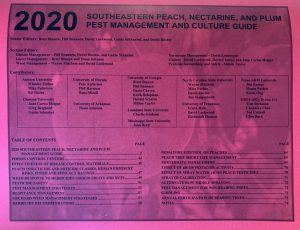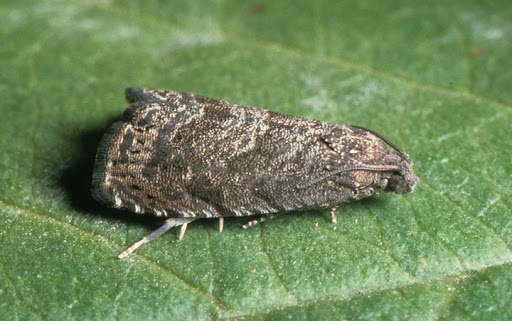
Overview
Oriental Fruit Moth (OFM), is an invasive pest of peaches. The adult moths are grayish, with darker banding on a mottled background (see above image). They are roughly 1/4 -inch in length, and have a wingspan of nearly 1/2-inch. Early in the season the females lay their eggs in new shoots. The larvae proceed to feed on the shoots, killing the tip and causing shoot strikes or ‘flagging’, where the terminal begins to droop and discolor as it dies.
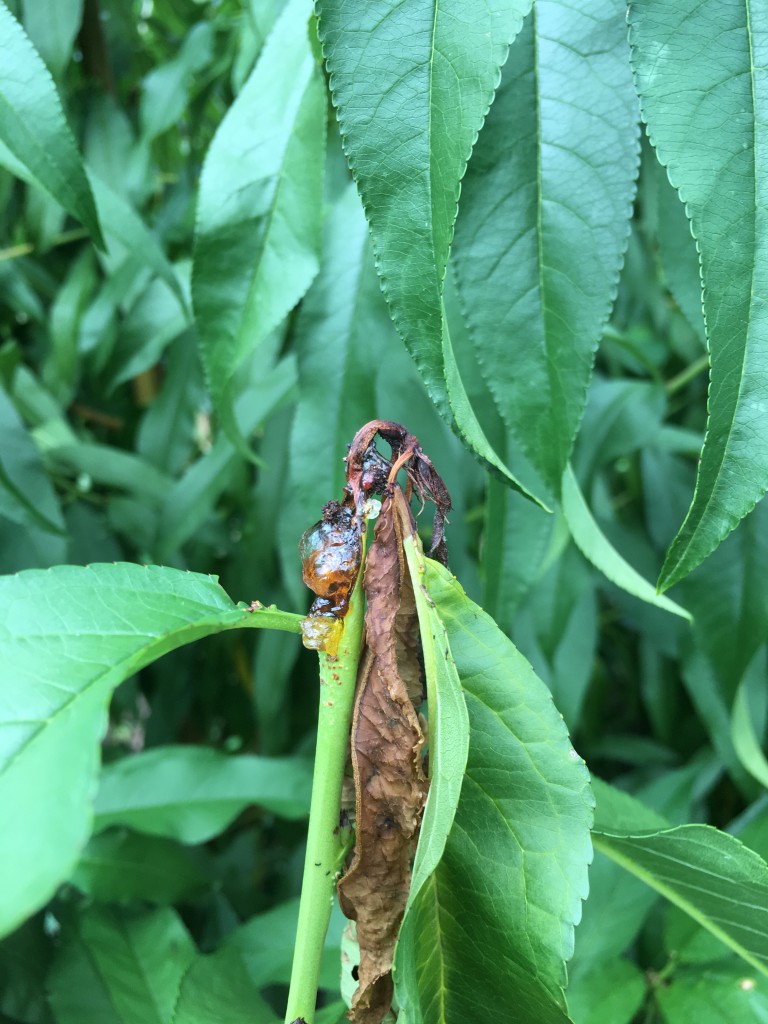
The most severe damage occurs later in the season when OFM attack the developing fruit. When fruit are available, the larvae bore to the center of the fruit and feed around the pit, resulting in unmarketable fruit. The mature larvae are approximately 1/2-inch long, pinkish in color, brown-headed, with three pairs of true legs, and numerous fleshy prolegs along the abdomen. With 5-6 generations a year, the biggest concern is finding larvae in the fruit at harvest.
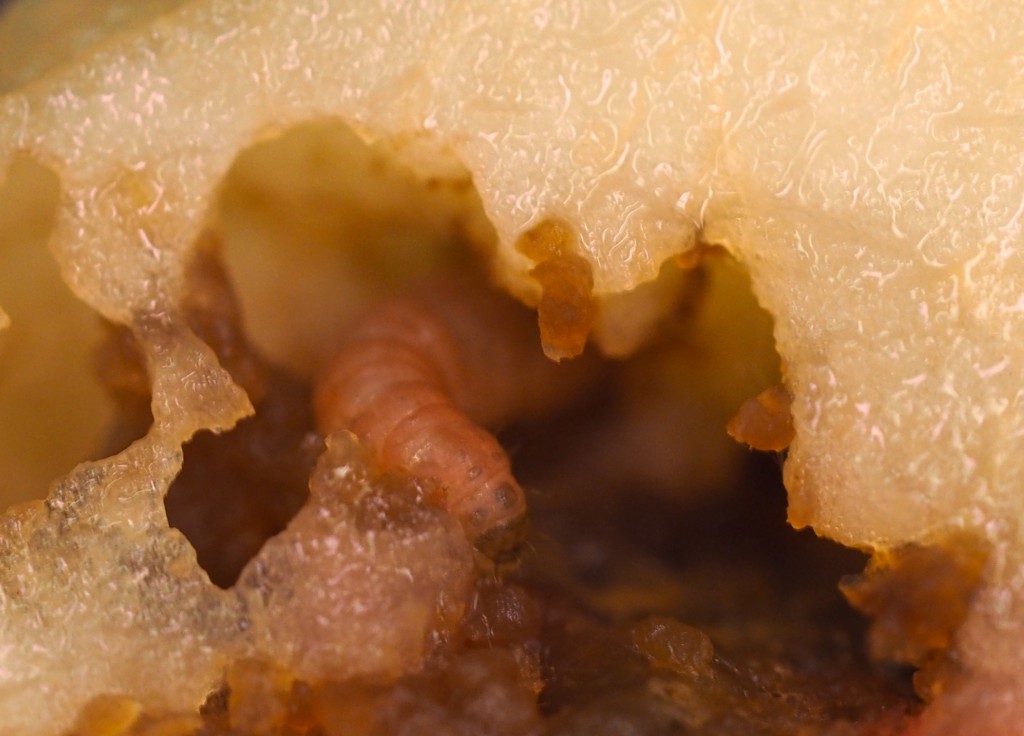
Historically OFM has not been a major pest in Southeastern fruit production. Unfortunately, though, in a few places (particularly upstate SC) we are starting to OFM become a problem. I don’t want to scare everyone and have you run out and change your management programs, but if you had considerable OFM injury last year, we should probably try a more focused approach on this pest for this season.
Management
Deciding if and when to spray for OFM can be based on pheromone trap catches and a degree-day (DD) model. Pheromone traps are used to determine the starting point of the model (biofix) and to gauge the intensity of populations. The DD model predicts adult emergence and egg hatch for each of the 5 to 6 generations. The table below shows adult emergence and egg hatch predicted at various DD after biofix for the first three generations.
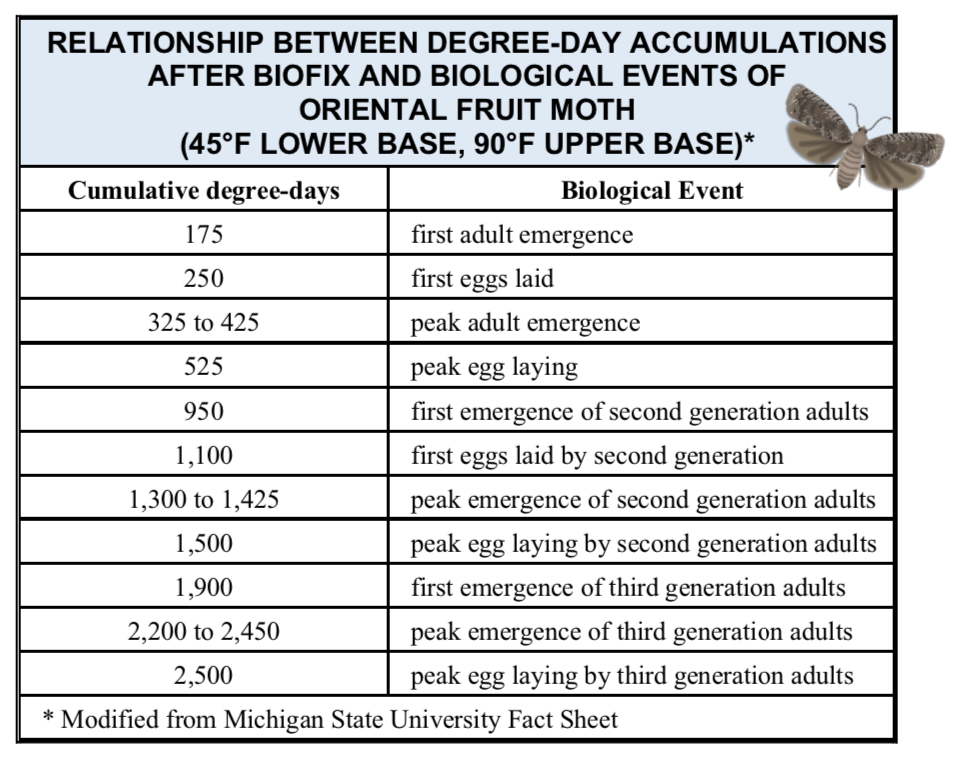
Degree day calculator:
UGA Weather (GA weather stations)
Degreedays.net (nationwide weather stations, but need to manually add degree days for cumulation)
To use the OFM model, begin to accumulate daily DD when male flight begins in the spring (biofix). The biofix date is when pheromone traps detect the first sustained catch of two or more moths in the spring. The tables that follow use daily maximum and minimum temperatures to determine the daily DD for OFM (base 45°F). Traps should be placed in orchards near the bud swell stage and checked one to two times per week. Traps should be hung at eye-level at a density of 1 trap per 10 acres of orchard. Check traps weekly after the biofix date.
Andy Rollins has been monitoring OFM in upstate SC. His traps estimate biofix beginning around March 18-25 of this year. As such, we can begin accumulating degree-days to determine the best timing for management of the first generation.
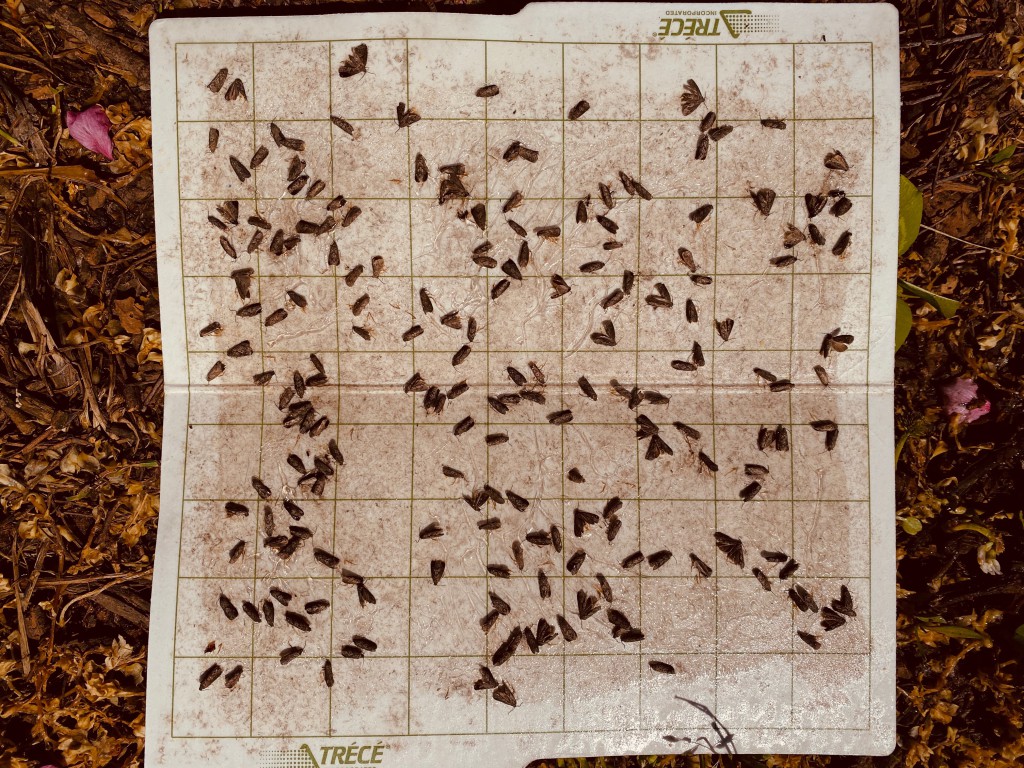
In orchards with a history of low OFM injury, a single insecticide application can be applied against OFM at 600 DD after biofix.
In orchards with a history of moderate to high injury, two insecticide applications are applied 14 days apart, the first at 500 DD after biofix.
If you continue to catch 5 or more moths on a weekly basis with the subsequent generations can be managed with insecticides applied at approximately 900 DD after your previous spray. For example, the first generation at 500-600 DD after biofix, the second generation at 1,400-1,500 DD after biofix, the third at 2,300-2,400 DD after biofix, etc…
Mating Disruption
OFM mating disruption saturates the orchard with pheromone to prevent mating and subsequent laying of fertile eggs. This reduces the populations to below economically damaging levels. Mating disruption for OFM is most effective in blocks in excess of 5 acres with low populations. A one-year transition from insecticide only to a combination of insecticide and mating disruption may be required in situations with moderate to high OFM pressure.
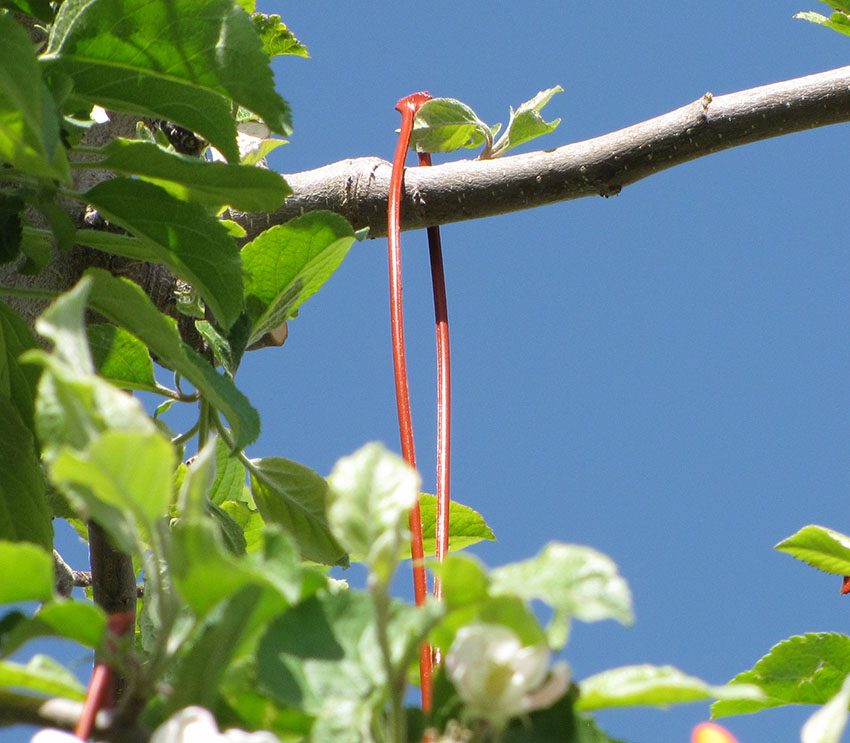
If you have any questions or concerns about OFM management or mating disruption, please don’t hesitate to let me know.
Please see the 2020 management guide for insecticide recommendation.
https://secure.caes.uga.edu/extension/publications/files/pdf/B%201171_12.PDF
I hope everyone is doing safe and well during these crazy times!
